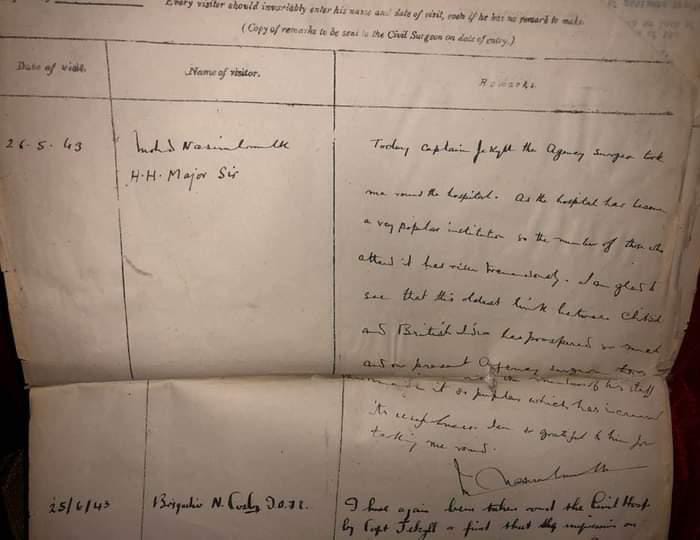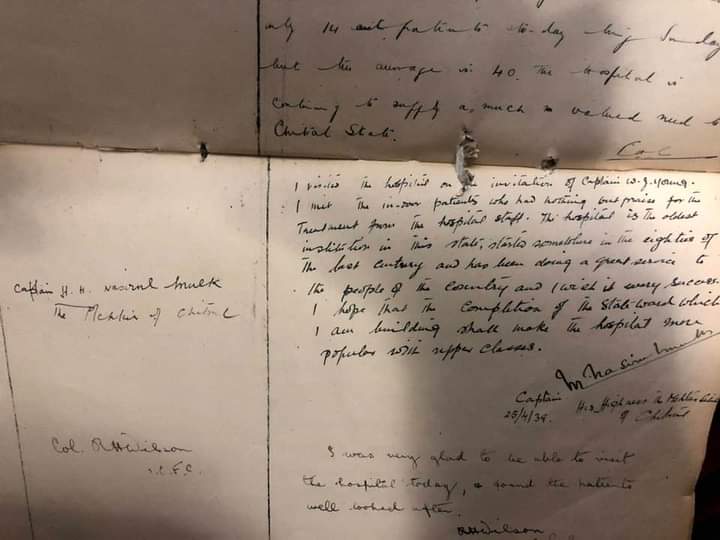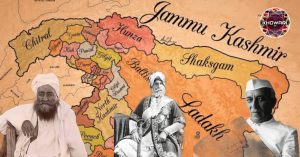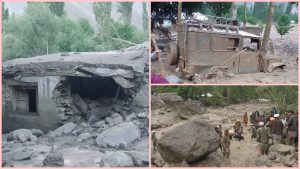Global Pandemics and Chitral

Above: A Veterinary Hospital in Ayun 1973
Arshad Irfan
Scientists and medical researchers for years, have differed over the exact definitions of a Pandemic and Epidemic but they agree on “wide spread of diseases”. The world witnessed many great epidemics from the pre historic period to the known historical era of humans. The plague of Athens in Greece is the first known epidemic in the history of mankind which had occurred in 429 BC to 426 BC and killed more than 100,000 people all over the globe. Europe suffered the most in any sort of epidemics in the world, in 1331-1353 AD, 60% of its population died due to the plague called the “Black Death”. Over 200 million people tasted death in the world and it was the world most deadly Pandemic in history, as it spread from Central Asia to Europe, North America and other parts of the world. Chitral now the district of Khyber Pakhtunkhwa located in the north of Pakistan situated between Central Asia and South Asia may have witnessed the plague of “Black death” but we can’t say it for sure, due to lack of any source and evidence. From many available sources and records we found that this region was suffered by pandemics two times in the last 150 years which are locally called as “Seq Maraz” Small Epidemic (1908 AD) and “Lot Maraz” The Great Epidemic (1918 AD).
“Seq Maraz” refers to the sixth Cholera Pandemic (1899- 1923 AD). According to some authors it begun in India in KUMBH MELA (A Religious gathering of Hindus in India in every 12 years and an astrological event when Jupiter is in Aquarius and Sun enters Aries) and killed 800,000 people and it spread to middle east and other parts of the world. A local historian and writer of Chitral at that time Mirza Ghufran says, “On 19th of October 1908 AD due to some work and to meet chief commissioner Mehtar went to Peshawar. He stayed there for 16 days and came back to Chitral on 21st November 1908 AD. During journey of the Mehtar, Cholera spread in this region, from Drosh to Chitral many people died, most of people of the region never saw such kind of Epidemic. The author limited the human mobility in the villages and appointed guards in the villages” (Ghufran.1921 AD). Mirza Muhmmad Ghufran, in the absence of Mehtar Shuja ul Mulk , appointed guards in Kari and Seen Lasht and many other villages to limit the humans mobility to prevent further spread of the diseases to upper parts of the region. The people of Chitral remember it as a “Seq Maraz”, (the small epidemic). It mostly infected southern part of Chitral. The winters of 1908-1909 AD were very hard for Chitral. Later Chitral was hit by a major earthquake. It is not sure that the famous saying in Chitral “Brik Singoora hai” which means the death is near, refers to the Sixth Cholera pandemic (1899- 1923 AD) (Seq Maraz) or to the Spanish Flu of 1918 AD (Lot Maraz).
After 10 years of the Cholera, at the end of World War I in 1918 AD, Influenza pandemic spread all over the world which was also called a Spanish flu of 1918 AD. Up to 50 million people died and 500 million were infected all over the world. It was one of the world deadliest epidemic. “Mortality rate in Younger people were very high, the high mortality rate in healthy people 20-40 age group was unique feature of the pandemic” (CDC -Center of Disease Control and Prevention Journals). Like other parts of the world Chitral was also infected by this flu virus. Ghufran wrote, “In early days of November 1918 AD the Pandemic of “Influenza” appeared in this region (Chitral) and made this place a valley of grief. Mehter was in the mountains for hunting, when the epidemic was at its peak, he came back to Chitral, people were exhausted of burial of dead bodies and Mehtar started Spending money on burial and funeral, sent shrouds to different villages. We heard that in Kabul and Turkey many people were buried without proper funeral and Shrouds. In many other countries they had lack of people for burial. Thanks to God that we were in a comparatively good position because of the attention of the king”. He further says “this dangerous epidemic started in Europe, first soldiers were infected then the officers and lords then spread all over Europe, from Europe it spread to Africa and killed many people there then reached to India and Iran, from there it spread to China and Tibet then Turkey to Kabul, from Kabul to Bajour , Swat and reached to Chitral. It ruined Badaghshan spread all over the world. In Chitral people were exhausted of burying dead bodies large number of people and families died here. This disease used to infect the young and healthy persons both male and female the most as compare to infants and old age group. It started with flu and after two to three days headache and fever used to join with it. They had different symptoms in different people and the local physicians were helpless to treat it. From Muharam 1337 Hijri to mid of Safar 1337 Hijri the disease stayed in this region. Shah Zarin Charvelu a Noble man of Torkhow and the Foster Father of Shahzada Muzafar Ul Mulk died due to this epidemic” (Ghufran. 1921).
When we analyze Mirza Ghufran writings , this pandemic hitting this region through the southern part and spread all over Chitral and stayed here for 45 days. We are unable to find the exact number of people died due to this disease in Chitral. As the unique nature of the disease mentioned in Center of disease and prevention journals, it was infecting the young age group from 20 -40 years the most and Mirza Ghufran also discussed and says:
(ہر جوانے کے رعنا تر بود خواہ مرد خواہ زن این مرض بہ او عاشق تر بود ،وبہ پیران و سقیم مزاجان رغبت میداشت)
Further the author discussed about the symptoms of this disease. Shah Zarin Charvelu, Mirza Khan Asaqal, Abdur Rahim and many young men and women died due to this epidemic. (Hidayat Ur rehman 2020). It was the deadliest epidemic in Chitral history and people call it “Lot Maraz” the great epedimic and the year 1918 as a “Lot Marazo Sal” the year of the great epidemic.


Above: Notes from Mehtar Nasir Ul Mulk on Visitor’s Notebook of Civil Hospital in Jang Bazar Chitral in 1943
From time to time Chitral witnessed many contagious diseases like Leprosy (Lot Chomik) , Tuberculosis (Bariki Lahazi), Small pox ( Ispru), Chiken pox (Hurance), Pertussis (khopek Chehk, people used to wear red thread in their neck to prevent themselves from evil of “Pertussis”) and many other illnesses which infected all age group in the region. Now after almost 100 years of the “Lot Maraz” Spanish flu of 1918 AD the world is dealing with a new global pendamic called COVID-19 the Corona Virus. It started in China Wuhan City spread to Europe and infecting 197 countries all over the world. According to the WHO reports about half million people in the world are infected and again Europe suffering the most, half of the infected people are from Europe about 12000 of them are died till date. The people of Chitral are again facing the impending danger of Corona Virus, as five suspected cases reported till date, thanks to God almighty that none of them are positive for Corona viruses yet, the Lawari tunnel is closed on directions of District Administration . As history suggests, limiting the human mobility and locking down the gate ways of Chitral may prevent us from the spread of this Virus in the region. May Allah help all the people of Chitral and Pakistan to fight against this Global pandemic of COVID 19. Amin.
(Written on 27th March 2020 during COVID-19 Pandemic)
Uploaded on 11 July 2024


